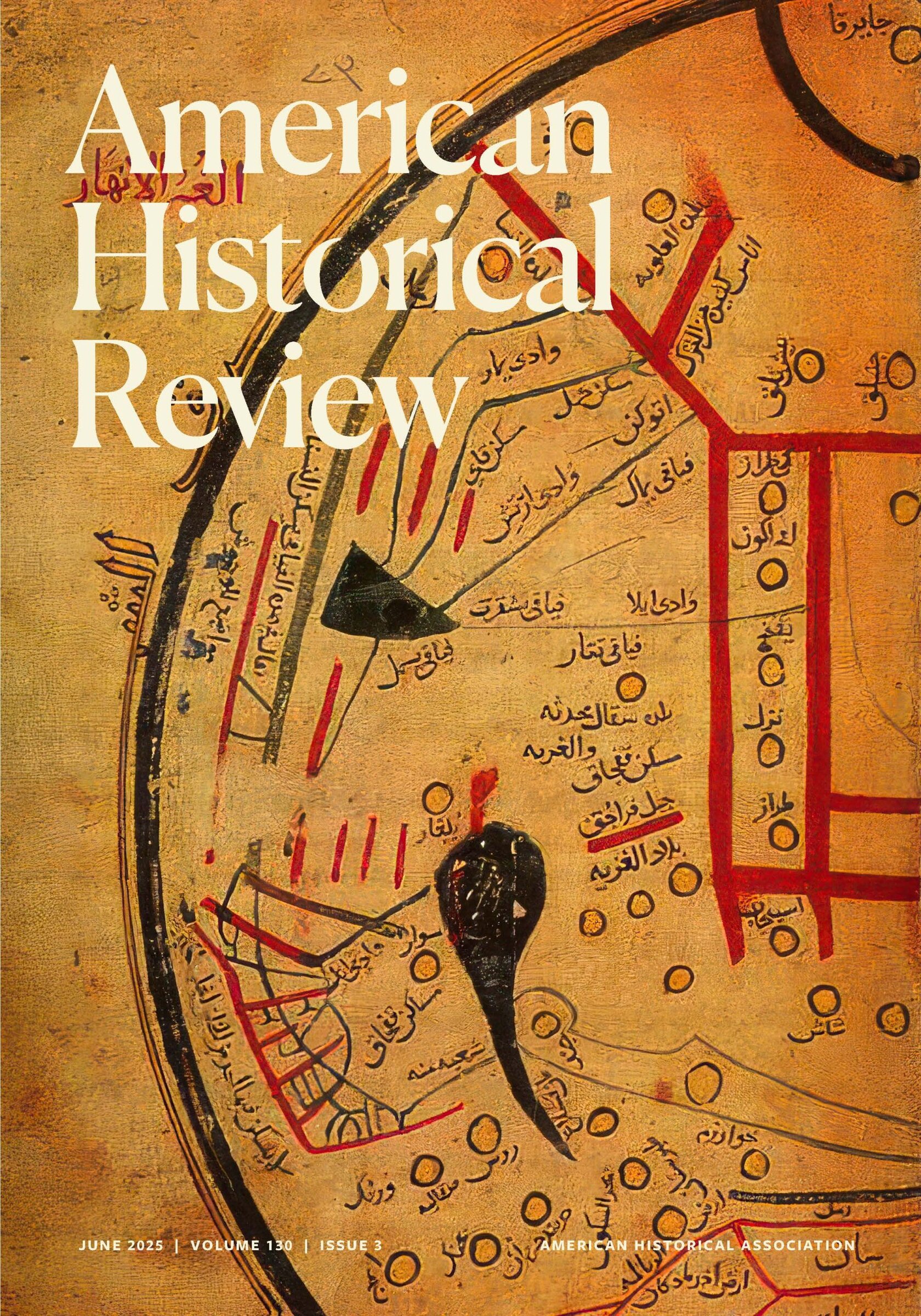On behalf of the Nominating Committee, I am pleased to report the results of the 2006 election for AHA offices. The committee is extremely grateful to all the candidates who agreed to stand for Association elective office and committee positions despite their having other obligations. The Association depends for its continued well being upon the willingness of its members to serve. In the following list, elected candidates are bolded.
President (1-year term)
- Barbara Weinstein, New York University (modern Latin America, Brazil)
President-elect (1-year term)
- Paul Freedman, Yale University (medieval social, Spain, comparative studies of the peasantry, history of food)
- Gabrielle M. Spiegel, Johns Hopkins University (medieval, with a special interest in historiography and linguistic analysis, medieval and contemporary)
Vice President, Teaching Division (3-year term)
- Kenneth Curtis, California State University, Long Beach (Africa, Third World, comparative)
- Karen Halttunen, University of Southern California (U.S. cultural and intellectual)
Council (3-year terms)
Slot 1
- Peter C. Perdue, Massachusetts Institute of Technology (modern Chinese and Japanese social and economic, history of frontiers, Central Eurasia, historical methodology)
- Larry Wolff, New York University (Eastern Europe, Enlightenment, Poland, Habsburg monarchy, early modern Rome and Venice; history of childhood)
Slot 2
- Jesus Francisco Malaret, Sacramento City College (United States, with Latin American and Chicano history)
- David Tegeder, Santa Fe Community College (U.S. South, African America, labor)
Division Representatives (3-year terms)
Professional
- Leisa Meyer, College of William and Mary (gender and sexuality studies, U.S. women, American popular culture and cultural history)
- Bryant (“Tip”) Ragan Jr., Colorado College (18th-century France, Enlightenment and the French Revolution; gay and lesbian, history of sexuality)
Research
- Clayborne Carson, Martin Luther King Jr. Research and Education Institute, Stanford University (African American history of the period after World War II)
- Conrad E. Wright, Massachusetts Historical Society (colonial and early national America)
Teaching
- Patricia O’Neill, Central Oregon Community College (18th-century comparative Chinese-European)
- Joseph Thompson, Montgomery College (Maryland) (United States, 19th-century politics; antebellum South)
Committee on Committees (3-year terms)
- Tani E. Barlow, University of Washington (modern China, gender and feminist theory, intellectual history of social science)
- R. Stephen Humphreys, University of California, Santa Barbara (Islamic and Middle East, religion and politics in the modern Islamic world)
Nominating Committee (3-year terms)
Slot 1
- Susan R. Grayzel, University of Mississippi (women and gender, modern Europe, Britain, France, cultural history of war)
- Douglas M. Haynes, University of California, Irvine (social and cultural history of modern Britain and imperialism, history of medicine in Britain and the United States since 1800)
Slot 2
- Leah Shopkow, Indiana University (history of the Middle Ages and historiography)
- Laura Ackerman Smoller, University of Arkansas, Little Rock (medieval, science and medicine, religion, astrology, apocalyptic thought, saints)
Slot 3
- Steven Mintz, University of Houston (19th-century United States; social, family, community)
- James Turner, University of Notre Dame (American and British intellectual history, especially the history of academic knowledge and higher education)
Election Process and Results
Out of the eligible 15,147 voters, 3,735 cast ballots before the November 1 deadline stipulated by the AHA constitution. That is, 24.7 percent of the eligible membership voted in 2006, compared to the 29.6 percent who voted in 2005. These two years mark the highest level of participation in an AHA election in more than two decades. The rate of return corresponds closely to the median range of voter participation in major associations, which is 24 percent.
The 2006 election marked the second year that AHA members had the opportunity to vote online to elect the Association’s officers. The AHA once again used Election Services Corporation (ESC) of Garden City, New York, to prepare and distribute election ballots to AHA members and to receive, validate, and tally the votes. This year—as last—members who furnished valid e-mail addresses and agreed to receive messages were asked via e-mail poll their preference for online or paper ballot. Of those who cast votes, 3,444 (92.2 percent) voted online and 291 (7.8 percent) voted by paper ballot.
All AHA members who opted to vote electronically received an e-mail message with a unique computer-generated user name and password, good only for the online balloting system. Once successfully logged in, members could read the election rules and link to the ballot, which were also linked to candidate biographies. Members who lacked a valid e-mail address, or who requested the paper ballot, were mailed a paper ballot no later than September 1. The procedures for paper ballots were essentially the same as in previous years: after filling out the ballot, members returned it to ESC, which entered the information into the system. In theory, a member could receive both an e-mail and a paper ballot. Since the system tracked whether someone voted, separate from specific votes, the system accepted the first vote received and entered into the system from that voter (but without identifying the specific voter).
Individuals who renewed their membership or joined the AHA for the first time after the initial mailing of ballots were also allowed to vote in the election. Anyone who renewed or joined before October 17 was able to vote online or to request a paper ballot. Although no paper ballots were mailed after October 17 (because the remaining time would be insufficient for members to receive and return the ballots to ESC before the constitutional deadline of November 1), those who renewed or joined before October 17 could vote online until midnight of November 1.
Committee Deliberations
The Nominating Committee for 2006 met in Washington, D.C., February 4–5, 2006. (Univ. of California at Davis), chair; Antoinette Burton (Univ. of Illinois at Urbana-Champaign); Olivia Remie Constable (Univ. of Notre Dame); Neil Foley (Univ. of Texas at Austin); Jan Golinski (Univ. of New Hampshire); Deena Goodman (Univ. of Michigan at Ann Arbor); Jane G. Landers (Vanderbilt University); David Northrup (Boston Coll.); Evelyn Rawski (Univ. of Pittsburgh); and Sharon K. Tune; AHA’s assistant director for administration were present. Executive Director Arnita Jones visited the committee on Saturday morning.
After meeting from Saturday noon to Monday noon, for the past nine years, the committee adjusted its meeting schedule to start at 9:00 a.m. on Saturday, continuing through mid-afternoon on Sunday. Members of the committee believed that the revised schedule would allow them to reach potential nominees at their homes over the weekend. The 2007 committee will meet on February 3–4, 2007. The chair of the 2007 Nominating Committee will be Neil Foley (Univ. of Texas at Austin).
The Nominating Committee then moved on to its principal task: nominating candidates for office. As in the past, the committee was very concerned that all AHA members should have input into the process. Every year the Nominating Committee issues several appeals to the membership at large for nominees. These appeals also stress the committee’s commitment to diversity of all kinds. In addition to soliciting nominees in an open letter published in the January 2006 Perspectives, this year’s chair again urged committee members to poll as many of their colleagues and associates as possible for nominees and to gather vitae before our February meeting. A number of AHA members responded to the open letter with suggestions; others, with expressions of willingness to serve. The committee also retained and reviewed suggestions and vitae of people considered over the previous five years. The nominations we received reflected the diversity of our organization with respect to gender, race, type of institution, field, and rank.
Fulfilling its constitutional responsibility, the committee selected two nominees for each Association office and elective committee position to be filled by election in fall 2006, with terms to begin in January 2007. The committee sought to identify able and energetic members who could work well with colleagues, and who were, where relevant, familiar with broad sections of the profession beyond their immediate fields of expertise. In the case of the president and other top positions, the committee recognized the importance of selecting nominees who could represent the interests of historians to the public at large, and who had demonstrated some degree of administrative skill. In all its selections, the committee was anxious to reflect the broad diversity of the historical profession in terms of type of institution served, geographic location, sub-discipline, interests, gender, and cultural background.
The committee wishes to thank the staff of the Association, and especially Assistant Director Sharon Tune, for her consistent outstanding work and her expert guidance and advice, for her good cheer and provision of comestibles. Previous Nominating Committee reports have noted how she has helped each year’s committee to sort through our very complex processes, and we cannot emphasize enough that this was true this year as well. Finally, I would like to thank the other members of the committee and the members of the past two Nominating Committees. Their good humor, hard work, good judgment, and broad knowledge of the profession made it possible for us to work swiftly and effectively, and enjoy doing so. To have worked with them was a great opportunity.
— (Univ. of California at Davis) was chair of the 2006 AHA Nominating Committee.
This work is licensed under a Creative Commons Attribution-NonCommercial-NoDerivatives 4.0 International License. Attribution must provide author name, article title, Perspectives on History, date of publication, and a link to this page. This license applies only to the article, not to text or images used here by permission.


